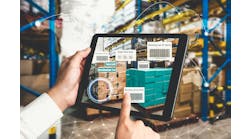UPS pilot tests delivery vehicles powered by fuel cell technology
Package delivery company UPS has announced the U.S. deployment of its first three large package delivery vehicles utilizing hydrogen fuel cells for power.
"Shifting away from a fossil fuel-based economy to a hydrogen economy would be a great environmental and technological achievement," says Chris Mahoney, UPS senior vice president of global transportation services. UPS plans to continue applying this technology in hopes that in the near future, it can deploy zero-emission engines across its fleet of 88,000 vehicles.
In May 2003, UPS, the U.S. Environmental Protection Agency (EPA) and automaker DaimlerChrysler announced a collaborative project to advance the state of hydrogen fuel cells. Starting in March 2004, DaimlerChrysler provided an "F-Cell," a fuel cell-powered Mercedes-Benz A-Class car, which UPS modified for early-morning package deliveries in southeastern Michigan. The car is fueled daily at the EPA's hydrogen fueling station at its National Emissions Testing Laboratory in Ann Arbor.
DaimlerChrysler and UPS concurrently began testing a medium-duty vehicle in Germany. The new fuel cell-powered Dodge Sprinters were built in part on information gathered during these road tests.
"Our two test programs showed the on-road reliability of fuel cell vehicles is excellent, equivalent to our current fleet," says Mahoney. "But what's truly exciting is how fast the technology is progressing."
According to DaimlerChrysler, compared to the first Sprinter, the new fuel cell Sprinters feature a 20% increase in powertrain efficiency; a 40% increase in range to 155 miles, and a 45% increase in peak engine power. They now have similar acceleration as a gas- or diesel-powered UPS vehicle.
The fuel cell-powered vehicles will feature special graphics on the sides that feature concentric circles rippling outwards, representing water. Fuel cell technology works by converting chemical energy -- in this case, hydrogen reacting with oxygen -- into electricity without combustion. The reaction produces water vapor and heat as the only byproducts.
Mahoney adds UPS is excited by the prospect of a significant reduction in maintenance expenses since the drive train will last longer than a gas or diesel engine. The vehicles in their new configuration also offer a 10% increase in cargo capacity compared to the diesel-powered Sprinters now in use by UPS, and the fuel cell technology eliminates the need to house an engine in the front of the vehicle, making it easier to explore new automotive designs, he notes.
One of the remaining hurdles is the need for more hydrogen refueling stations, Mahoney says. "While it's still more expensive to manufacture a fuel cell vehicle, DaimlerChrysler is working hard to perfect the technology and lower those costs. The refueling infrastructure is the next critical need," Mahoney says. "Only by making hydrogen as broadly available as gasoline or diesel can passenger cars and fleets truly reap the environmental and economic benefits."


